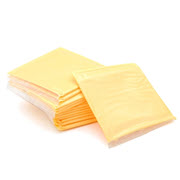|
Elviscat posted:I like the two massive toggle bolt holes from the original track that was up there question on that, I'm having painters come by later to fix up the bathroom wall that was cut up to put in the new outlet, so I'll see if they can fix those holes. The area where the previous fixture used to be is also a bit discolored - how do they usually fix something like that? Is there a special brush for popcorn texture?
|
|
|
|

|
| # ? May 30, 2024 16:28 |
|
Danhenge posted:Any ideas how this fixture is likely secured? Other than badly, i mean. Take out the bulbs, take off the covers that go around the bulbs (they may unscrew, or just pull off towards you), then the front panel should come off.
|
|
|
|
I took out the bath towel fixture that the original owners put in. Two of the screws were in typical anchors, but the other two were in these things. Any idea what they are? I'm pretty sure the fixture is from Ikea, and the wall light has something similar. It doesn't look like a stripped screw, and I'm not sure how to remove it.
|
|
|
|
they are a drywall sleeve anchors. How do you remove them? Cover over them because there's a metal part in the back that mushrooms when you tighten the screw. you might be able to pull them out by prying with a screwdriver a little and then pulling with pliers and getting them straight again.
|
|
|
|
actionjackson posted:I took out the bath towel fixture that the original owners put in. Two of the screws were in typical anchors, but the other two were in these things. Any idea what they are? I'm pretty sure the fixture is from Ikea, and the wall light has something similar. It doesn't look like a stripped screw, and I'm not sure how to remove it. https://www.lowes.com/pd/Blue-Hawk-15-Pack-2-435-in-x-0-125-in-Zinc-Plated-Steel-Light-Duty-All-Purpose-Anchor-with-Screws/1000103139 Looks like this style drywall anchor. Not sure the best way to remove that part that won't result in a bigger hole to fill though.
|
|
|
|
Push it back until it drops into the void?
|
|
|
|
Used drywall anchors are to be pushed into the wall where they become furniture for the Borrowers.
|
|
|
|
Those things have a wide rim that sits on the surface of the drywall so not an option with them
|
|
|
|
Final Blog Entry posted:Those things have a wide rim that sits on the surface of the drywall so not an option with them Then you gotta figure out which one will leave the bigger hole: pushing it in or pulling it out.
|
|
|
|
thanks. I think for those ones just covering them is fine (I'm having painters fix up the entire wall as it was cut up a bit to put in a new outlet),
|
|
|
|
Elviscat posted:The part around the base of the bulbs may be a nut that unscrews. devicenull posted:Take out the bulbs, take off the covers that go around the bulbs (they may unscrew, or just pull off towards you), then the front panel should come off. Yeah, y'all were right about this. Excitingly, one of the fasteners of the underlying plate seems to just spin in place, maybe just a hosed up drywall anchor? A peak under the part of the plate I could unscrew suggests that the same rear end in a top hat who put in the light fixture I posted earlier in this thread might have put up this fixture...I'm not convinced there's actually a box under there, maybe just wires peeking out of the drywall. Upside/downside kind of thing because my partner would like to relocate the fixtures, and if the holes are small it might be easier, if dangerous until it gets fixed.
|
|
|
|
Mounting a vanity light vertically like that should be a crime anyway. I think some of those old Hollywood vanity lights used to be an acceptable enclosure, i.e. didn't require a box.
|
|
|
|
Danhenge posted:Yeah, y'all were right about this. Excitingly, one of the fasteners of the underlying plate seems to just spin in place, maybe just a hosed up drywall anchor? A peak under the part of the plate I could unscrew suggests that the same rear end in a top hat who put in the light fixture I posted earlier in this thread might have put up this fixture...I'm not convinced there's actually a box under there, maybe just wires peeking out of the drywall. Upside/downside kind of thing because my partner would like to relocate the fixtures, and if the holes are small it might be easier, if dangerous until it gets fixed. Yea, that's the cheapest vanity fixture money can buy (I think it's only  ), I'm not at all surprised there's no box behind it. ), I'm not at all surprised there's no box behind it.
|
|
|
|
I went to a lighting store today and will probably do a flush mount in the kitchen, and a thinner bath bar in the bathroom I learned that flush mounts or semi-flush mounts tend to be quite a bit brighter than their pendant equivalents for whatever scientific reason actionjackson fucked around with this message at 22:22 on May 11, 2021 |
|
|
|
Insulation question. There is this wall cavity (more like ceiling) in my finished attic where bath vent ducting will be snaked through. It had pink panther insulation that I got rid of since it was old and full of wooden splinters and nails due to a recent roof re-shingling. What kind of insulation material is best for this? I live in Ontario Canada so very cold winters with very hot summers. Just refill with pink panther?
|
|
|
|
I don't know the brand name but I think that some kind of poo poo like Rockwool is the new hotness. Its supposed to be better than the pink stuff. And I think they make it right down the road from you in Milton.
|
|
|
|
I'm pretty sure the best thing to have done is leave it filled with wood splinters and nails but in place and functional. Remember it used to be made out of glass splinters. If it's a cavity you have to fill now cellulose is the only answer without ripping out all the drywall or whatever encloses it.
|
|
|
|
Pretty curious about that wire splice thatís about to get buried in insulation again
|
|
|
|
mr.belowaverage posted:Pretty curious about that wire splice thatís about to get buried in insulation again Also that looks like lamp cord. Pretty sure you can't install that behind a wall... (edit: or in a ceiling, or wherever it's hidden) DaveSauce fucked around with this message at 13:04 on May 12, 2021 |
|
|
|
Hi, my name is Dawncloack and Im a disaster I left icecream in a bag with newspapers and it melted. That's newspaper ink on my treated?/compressed? wood floor. Washing and using paper to try to "sand" it have not worked. What can I try that won't leave a mark/damage the wood? TIA
|
|
|
|
H110Hawk posted:I'm pretty sure the best thing to have done is leave it filled with wood splinters and nails but in place and functional. Remember it used to be made out of glass splinters. If it's a cavity you have to fill now cellulose is the only answer without ripping out all the drywall or whatever encloses it. Problem is that I tossed the old pink panther stuff when I originally pulled it out. That stuff immediately made my skin all itchy and irritated so I garbage-bagged it immediately. Never really liked handling that stuff. AmbassadorofSodomy posted:I don't know the brand name but I think that some kind of poo poo like Rockwool is the new hotness. melon cat fucked around with this message at 15:59 on May 12, 2021 |
|
|
|
melon cat posted:Problem is that I tossed the old pink panther stuff when I originally pulled it out. That stuff immediately made my skin all itchy and irritated so I garbage-bagged it immediately. Never really liked handling that stuff. I'm with you on fiberglass being garbage but I am saying next time don't remove it unless there is a problem. Unless it's moldy/mildewy it's fine. Recycled denim insulation is the current hotness. No currently known health hazards. It's not the cheapest. Can you post a wide angle shot of what you're doing because it's hard to guage what's going on from one seemingly cavity shot. I feel like there is something missing here in terms of vapor barrier or similar.
|
|
|
|
Dawncloack posted:Hi, my name is Dawncloack and Im a disaster I would try the magic eraser Mr Clean thing. Give it a shot somewhere very out of sight first to make sure it won't bleach the floor or whatever but I use it on my painted walls all the time and it's been safe for me so I can't imagine you'll have a problem.
|
|
|
|
So I've got a spot where a bunch of coax enters the basement from a defunct satellite TV installation: But a temperature sensor for our boiler also pokes out through that hole. I'd like to take the coax out and then close enough of that hole to keep mice or other creatures out, but not just enclose that wire for the sensor in the hole permanently. Willing to spend a little more money or time to do it something like "right" as opposed to cheap and easy.
|
|
|
|
I'd just caulk it with something like sikaflex. I don't think rodents will chew at it. If they do, you could pack the hole with steel wool.
|
|
|
|
Magic erasers are basically super fine grit wet sanding sponges. If the stain is on the surface, it should work. If it's absorbed into the finish or the wood, you're going to have to sand down to the affected areas. Definitely test somewhere inconspicuous first.
|
|
|
|
Xenix posted:I'd just caulk it with something like sikaflex. I don't think rodents will chew at it. If they do, you could pack the hole with steel wool. I'm not sure that waterproof caulk is the right move, because the house is 90 years old so that's historic brick ideally expands & contracts with moisture. I'd like to avoid doing anymore problematic "repointing" given that there are already patches around which look like portland cement.
|
|
|
|
There should really be a drip loop in those cables before they enter the house.
|
|
|
|
FogHelmut posted:There should really be a drip loop in those cables before they enter the house. Based on the sheer amount of coax throughout the house doing total nonsense, I'd say somebody let the Dish Network techs do whatever they liked without any oversight. There at least two but maybe more runs of coax that have been cut but are still tacked to floor joists in the basement. The single run of coax that is connected to Comcast service is at least four different runs that have all been joined with male-to-male connectors.
|
|
|
|
Danhenge posted:I'm not sure that waterproof caulk is the right move, because the house is 90 years old so that's historic brick ideally expands & contracts with moisture. I'd like to avoid doing anymore problematic "repointing" given that there are already patches around which look like portland cement. I don't know a ton about unreinforced masonry (being in earthquake country, it's a terrible building material), but sikaflex can accommodate something like 35% joint movement. It's not going to stop the mortar around it from absorbing moisture, so long as you only place it in the hole and don't smear it around on the joints. It looks like quickrete has a product specifically for this application that is a sanded acryllic (https://www.quikrete.com/productlines/mortarrepair.asp). I'm not seeing how much movement it would accommodate, though.
|
|
|
|
Caulk isn't really going to be strong enough that it'll cause problems for your bricks.
|
|
|
|
H110Hawk posted:I'm with you on fiberglass being garbage but I am saying next time don't remove it unless there is a problem. Unless it's moldy/mildewy it's fine. Sure here's a pic:  As you can see there's a pile of fallen pink panther in the back. Previous owner "secured" up each piece of insulation to the barnboard roof using the old shingle nails protruding through. Like a Pink Panther crucifixion allll the way around the kneewall. So when the roofers reshingled my roof it all sloughed off. There has to be a better way of securing the new insulation to the angled ceiling. And yes I'm aware that there are no baffles. Well, there are but they're poorly placed and not doing anything for the house. But these old houses don't exactly breathe the way newer ones do so I'm open to any suggestions on how to properly insulate. melon cat fucked around with this message at 01:30 on May 13, 2021 |
|
|
|
Xenix posted:I'd just caulk it with something like sikaflex. I don't think rodents will chew at it. If they do, you could pack the hole with steel wool. I've had better luck with exclusion products that are usually copper based but are like steel wool in texture. I think it holds up better to moisture.
|
|
|
|
melon cat posted:Sure here's a pic: You could fill that whole area in with blow in. If you just want to replace what's there, you could plastic sheet over it (I dunno if this might seal too much moisture in) use wire insulation supports or use nylon twine knotted onto nails on the joists to hold it up.
|
|
|
|
Can anyone tell which position on this valve is open? Valve handle was already off before we moved in.
|
|
|
|
Valve stem is perpendicular to the body, and that looks like a 1/4 turn ball valve, so I'm pretty sure it's shut, tread carefully as hell when doing anything involving gas of course, don't assume that any valve is shut. If you want to verify the valve position you can take a crescent wrench or a pair of vice grips, place them on those flats and attempt to turn the valve clockwise to verify its position.
|
|
|
|
melon cat posted:Sure here's a pic: OK so this is behind a kneewall in the attic. It appears that there is unfaced fiberglass batt on the 'floor' area (the ceiling of whatever rooms are below) as well as on the kneewall itself. Assuming that the kneewall area there is isolated - that is, that it doesn't enter into a living space directly, and that you are opening a door or hatchway to get in there - I would not install any insulation on the underside of the roof deck. Typically, the only time you should do that is when the roof deck\underside is actually the inside wall of a room, and in such case, you need to install a vapor channel (styrofoam W-sheet) against the roof sheathing (between the joists) in order to retain airflow between the soffit (at the bottom edge/overhang) and the ridge, then paper-faced batt insulation stapled to the joists. If you stuff insulation between the roof joists without it and impede airflow, any moisture that builds up due to normal heating/cooling of the roof deck will soak into the insulation & wood, resulting in rot & mold. The roof structure is supposed to be an unheated, space, ventilated to the outside so that the roof can 'breathe.' Older homes such as yours often do not have the designed-in breathing that more modern homes do, and typically make do with attic gable vents. The best way to deal with your situation is to leave the roof surface uninsulated, so that it has the benefit of air circulation throughout the kneewall space. Your best heat-loss control is to insulate the hell out of the horizontal space and, if the other side of that kneewall is a living space that's heated/cooled, insulate the kneewall as well. Also, deal with that wire. Hopefully it's a doorbell or thermostat or something DC. Danhenge posted:So I've got a spot where a bunch of coax enters the basement from a defunct satellite TV installation: Yes, use silicone caulk. There are also concrete repair products that come in a tube. I have similar holes through my block that i caulked 25-years ago, they're fine. It can be removed if needed without excessive effort. PainterofCrap fucked around with this message at 14:23 on May 13, 2021 |
|
|
|
I am installing a door into a solid brick wall that already has some electrical and ethernet cables firmly embedded within it (not movable). The cables are near the floor, so I imagine re-routing them under the door is the best route to go. What's the best practice for dealing with the wires and ensuring proper splicing around the door? I have never installed a door before, so I am unsure what to expect here. I will have a contractor do the work but I just want to come into the conversation prepared.
|
|
|
|
Is 8 month old gas still usable? I have about 2 gallons. Is it going to wreck my car if I mix it in with a full fresh tank?
|
|
|
|

|
| # ? May 30, 2024 16:28 |
|
FogHelmut posted:Is 8 month old gas still usable? I have about 2 gallons. Is it going to wreck my car if I mix it in with a full fresh tank? Is it worth ~$6 to find out?
|
|
|

































